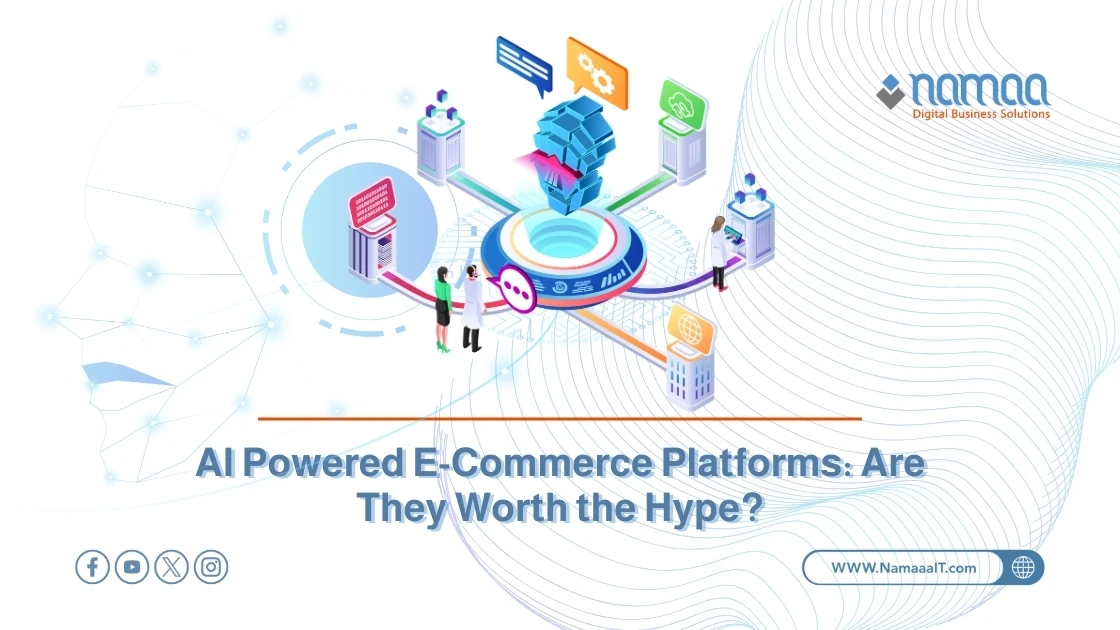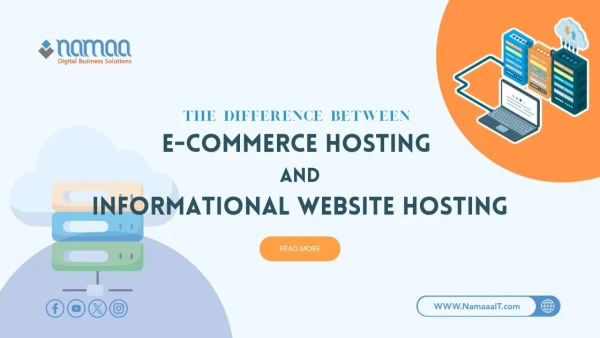In recent years, AI-powered e-commerce platforms have become a hot topic, widely promoted as revolutionary solutions for enhancing the shopping experience and boosting profits. These platforms offer features like personalized recommendations, chatbots, and customer behavior analytics, helping businesses deliver more efficient and customized shopping experiences.
But do these technologies really live up to the hype? Despite the advertised benefits, adopting AI comes with challenges such as high costs, the need for accurate data, and privacy concerns. In this article, we’ll objectively examine whether AI-powered e-commerce platforms truly deliver value beyond the buzz or if they’re just a tech trend that may not meet expectations.
What Is AI-Powered E-Commerce?
AI-powered e-commerce refers to using artificial intelligence technologies to optimize online store performance, from user experience to backend operations like inventory and pricing management. We're not just talking about basic tools, but systems that can learn from data, adapt to customer behavior, and make semi-autonomous decisions. These tools include recommendation engines, chatbots, data analytics systems, and personalization engines that tailor offerings based on user behavior.
What sets this type of commerce apart is that it makes the experience smoother for both sellers and buyers. Sellers gain accurate insights and forecasts to make smarter decisions, while buyers interact with intuitive interfaces that often show them exactly what they need—sometimes even before they realize it themselves, thanks to advanced systems that predict needs based on purchase history and preferences.
In short, AI doesn’t just add a tech layer to e-commerce; it reshapes how we think about buying and selling. As these technologies evolve, digital stores increasingly rely on them to cut costs, boost conversion rates, and improve customer satisfaction. However, this transformation isn’t without challenges, including data privacy concerns and high initial investment—issues we’ll explore later.
How AI Is Transforming the Shopping Experience
AI hasn’t just changed e-commerce interfaces—it has redefined the entire digital shopping concept. Today, when you browse a modern online store, the products, recommendations, and pricing you see are far from random. Every element on the page is designed to appeal to you based on your past behavior, location, and even how long you spend viewing a product. This is known as real-time personalization, one of AI’s biggest achievements in e-commerce.
AI also saves time. Shoppers no longer need to browse hundreds of pages; the system knows what they want with impressive accuracy and places it front and center. Even the site’s internal search engine has improved, now understanding context rather than just keywords—making the shopping experience faster and less frustrating.
On another front, AI reduces cart abandonment rates by sending smart notifications or offering instant discounts to encourage customers to complete their purchases. These systems work automatically but have a significant impact on sales.
Ultimately, AI has shifted shopping from simple product browsing to a personalized, intelligent, and interactive experience. However, it also places a heavy responsibility on retailers to use customer data securely and ethically.
Chatbots: 24/7 Customer Support
Chatbots are now a core part of modern e-commerce platforms. These AI-powered tools allow stores to provide instant, around-the-clock customer support without needing a large support team. The concept is simple: the customer asks a question, and the bot replies within seconds, often in a natural, human-like manner using contextual AI to understand intent—not just keywords.
One of the biggest benefits of chatbots is that they reduce wait times, enhance user experience, and cut operational costs. They efficiently handle repetitive inquiries such as order tracking, product details, and return policies. For more complex situations, they can escalate the conversation to a human agent.
But they go beyond automated replies—advanced bots learn from every interaction, improve over time, and can even suggest solutions before the customer finishes typing. Some systems incorporate deep learning and sentiment analysis to effectively deal with angry or hesitant customers.
While some customers still prefer speaking to a real person, chatbots strike a great balance between speed and resource savings. The key is designing them to be user-friendly, flexible, and non-intrusive. When used smartly, they can significantly boost brand trust and customer satisfaction.
Data Analytics: Turning Numbers Into Smart Decisions
At the heart of every AI-powered e-commerce platform lies a vital process: data analytics. We're not talking about basic Excel sheets, but advanced systems that read, interpret, and draw insights from millions of data points—customer behavior, market trends, and store performance strengths and weaknesses.
AI turns this data into a powerful decision-making tool. Instead of relying solely on instinct or experience, sellers can now know exactly when to launch a promotion, which product to discontinue, or the best time to run an ad. These data-driven decisions improve efficiency and reduce waste.
A key feature of AI-driven analytics is prediction. These systems forecast customer behavior, demand fluctuations, and even supply chain issues—before they happen. This gives businesses a real competitive edge in a fast-paced market.
However, this power isn’t without risk. Misinterpreting data or relying on it blindly without human oversight can lead to poor decisions. That’s why a balance between automated analysis and human judgment is essential.
Smart Inventory Management: Reducing Shortages and Waste
Inventory management has always been a tough challenge in retail—but AI has changed the game. Instead of relying on gut feelings or outdated estimates, companies now use smart algorithms to analyze historical data, customer behavior, and seasonal demand patterns. The result? Accurate decisions about what to stock, how much of each item, and when to reorder.
AI doesn’t just track quantities—it can predict which products might see a surge in demand or which ones will lose popularity. Sellers can then adapt their strategies quickly. This reduces storage costs, limits excess or expired stock, and prevents out-of-stock situations that result in lost sales.
When integrated with supply chain systems, smart inventory tools can also improve shipping and restocking schedules, making the process more efficient. Most importantly, these systems learn over time—each sales cycle enhances their forecasting accuracy.
That said, adopting these systems requires tech investment and accurate data. Businesses lacking strong digital infrastructure may not fully benefit. Still, in a competitive environment, smart inventory management is no longer optional—it’s essential for reducing waste and boosting profits.
Dynamic Pricing: How AI Adjusts Prices Automatically
One major AI application in e-commerce is dynamic pricing—systems that automatically adjust product prices based on various factors like demand, competition, timing, and location. This gives online stores a powerful ability to respond to real-time market changes and maximize profits without harming the customer experience.
For example, if the system notices high demand for a product or competitors increasing their prices, it can raise prices automatically to increase profit margins. Conversely, if a product isn’t selling, the system can lower the price or offer a limited-time discount to stimulate demand.
The biggest advantage here is speed. Humans can’t manually update prices for hundreds of products constantly—but AI can do it every minute if needed, with no errors or delays. It can even A/B test different price points and choose the best one based on performance.
However, caution is key. Dynamic pricing can frustrate customers if they feel they’re paying more than others or see frequent price swings. That’s why this strategy should be used transparently to maintain customer trust.
AI-Powered E-Commerce Platforms: Worth the Hype?
Companies are racing to adopt AI to show they're smart and up-to-date. But the real question is: do AI-powered e-commerce platforms live up to the hype? Do they actually deliver value beyond their tech façade?
The answer depends on implementation. When used thoughtfully, these technologies can deliver real results: increased sales, better customer satisfaction, lower costs, and more accurate operations. Smart recommendations, advanced analytics, and chatbot support all improve the customer journey and give sellers strong tools in a competitive space.
Problems arise when these tools are used as digital decorations—like adding a chatbot or recommendation engine without improving user experience or fixing basic issues like product quality or shipping speed. The result? A shallow experience that neither satisfies the customer nor benefits the seller.
There are also ethical and technical concerns like data privacy and misuse. AI is not a replacement for human thinking or real customer service—it’s a support tool that should be used wisely.
In conclusion, AI in e-commerce isn’t just a trend. It’s a powerful tool—but its true value only shines when it’s used strategically, data-driven, and with the customer in mind.
Summary
✅ 80% of customers prefer buying from platforms offering personalized recommendations—thanks to AI understanding their behavior and guiding them toward relevant products.
✅ Smart inventory management cuts shortages and waste by up to 35% through demand forecasting and automatic stock adjustments.
✅ Chatbots reduce customer service costs by 30% and handle over 70% of inquiries without human help.
✅ Dynamic pricing systems increase profits by 10–20% by adjusting prices in real time based on market data and buyer behavior.
✅ 85% of businesses that adopted AI in e-commerce reported improved customer experiences and conversion rates.









